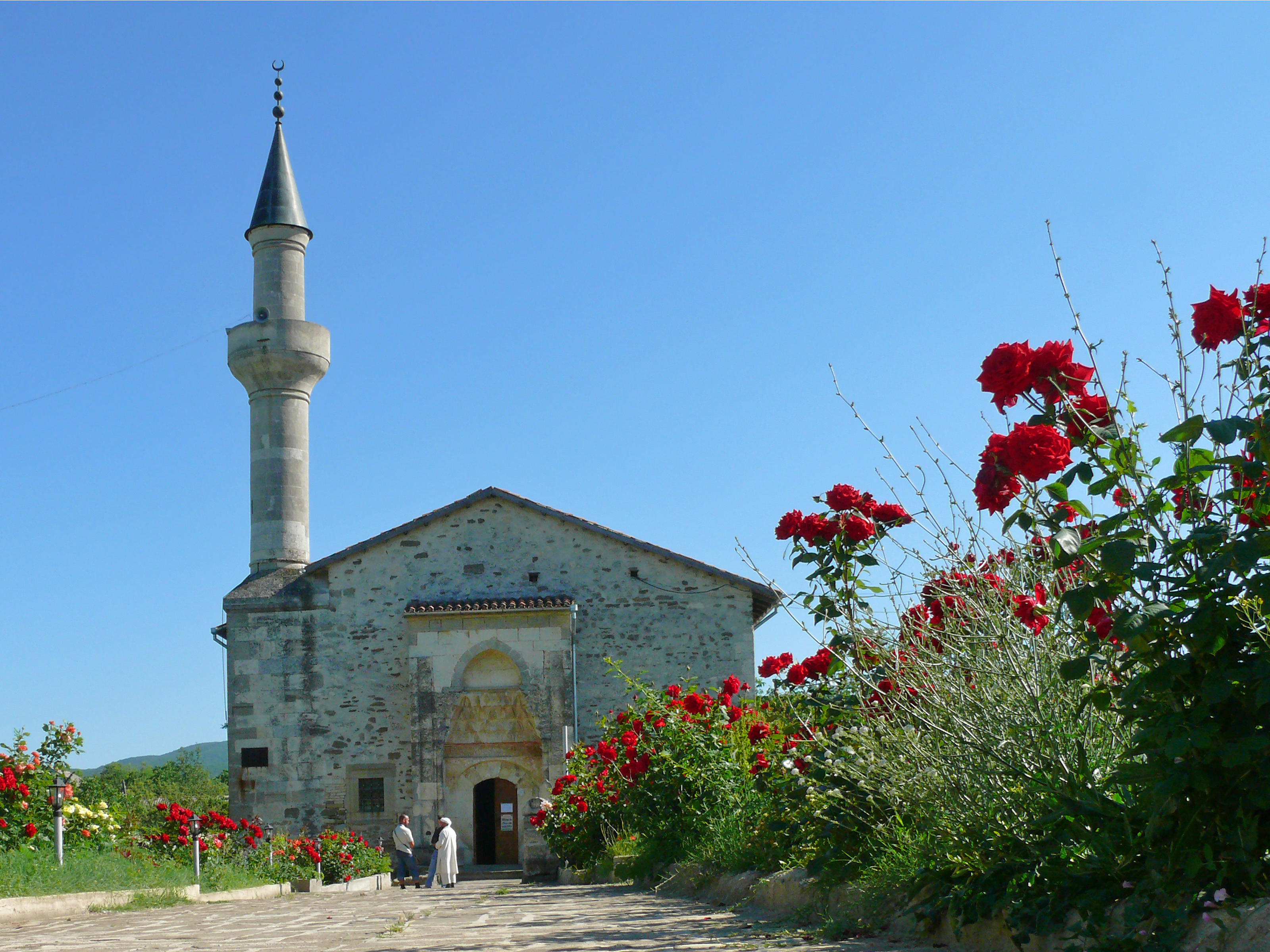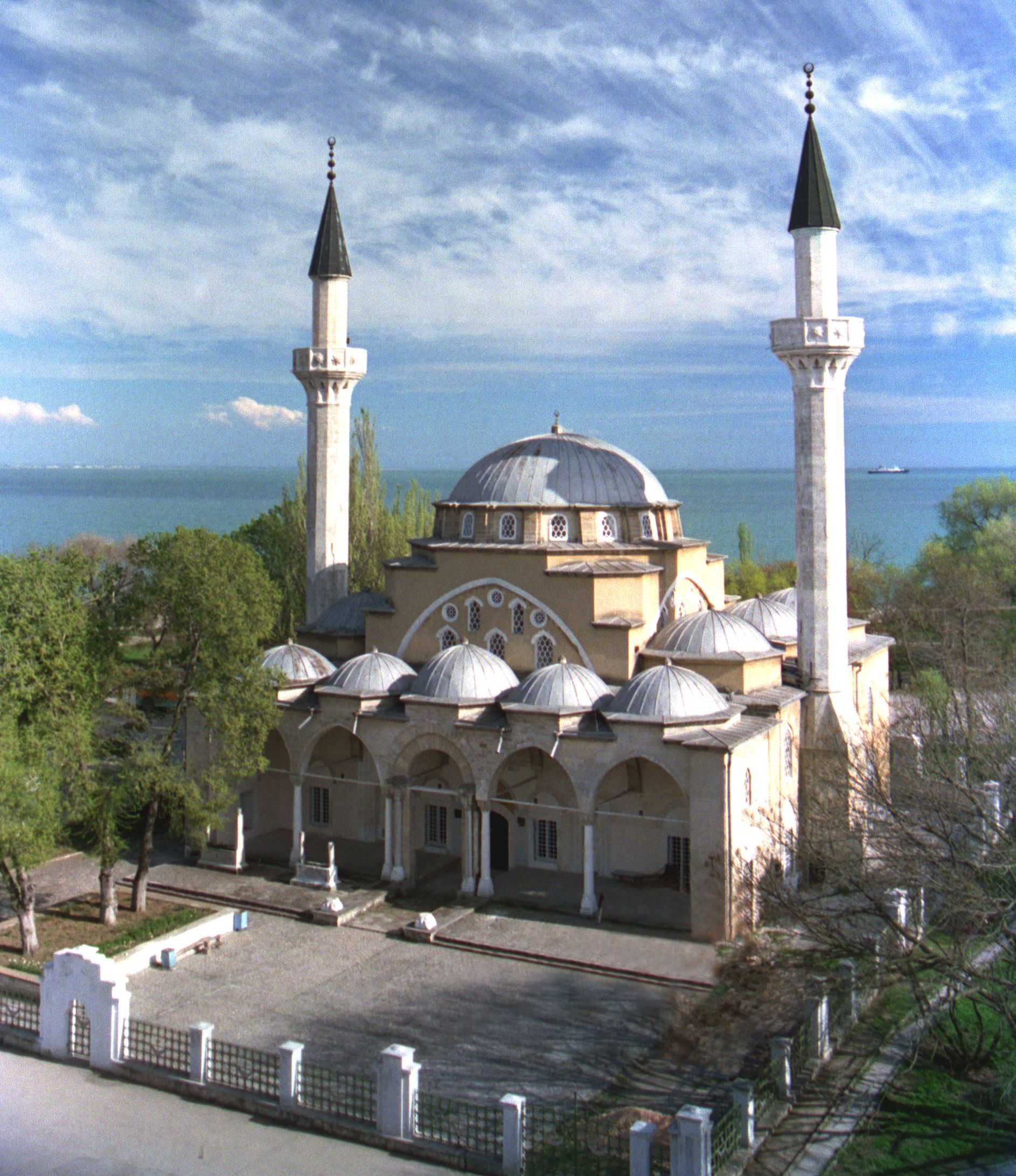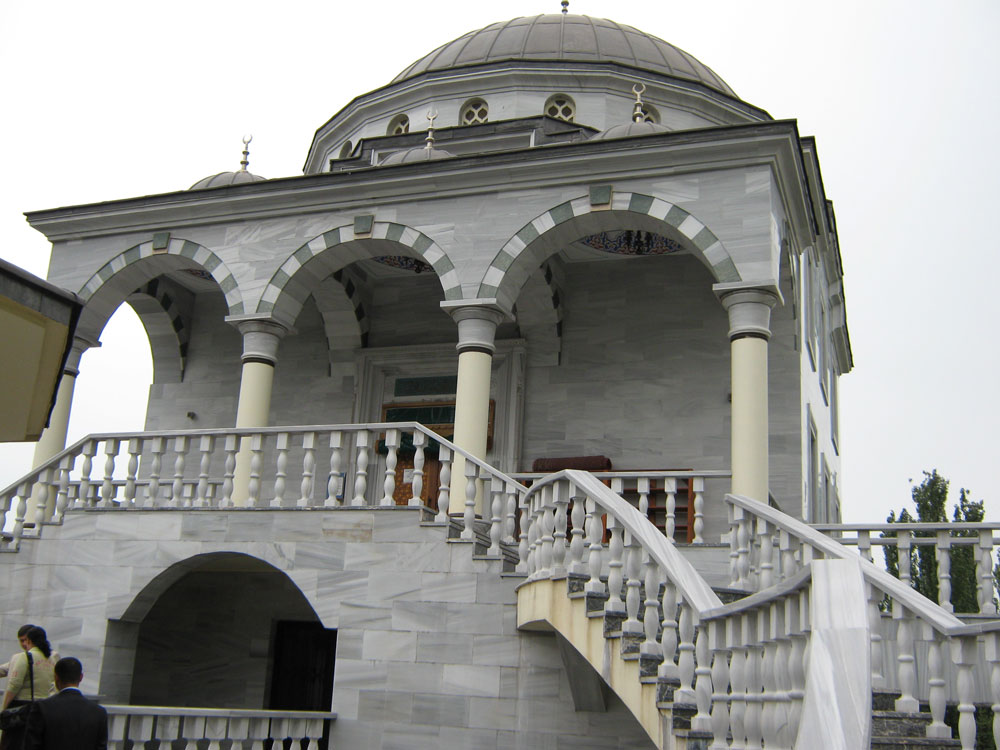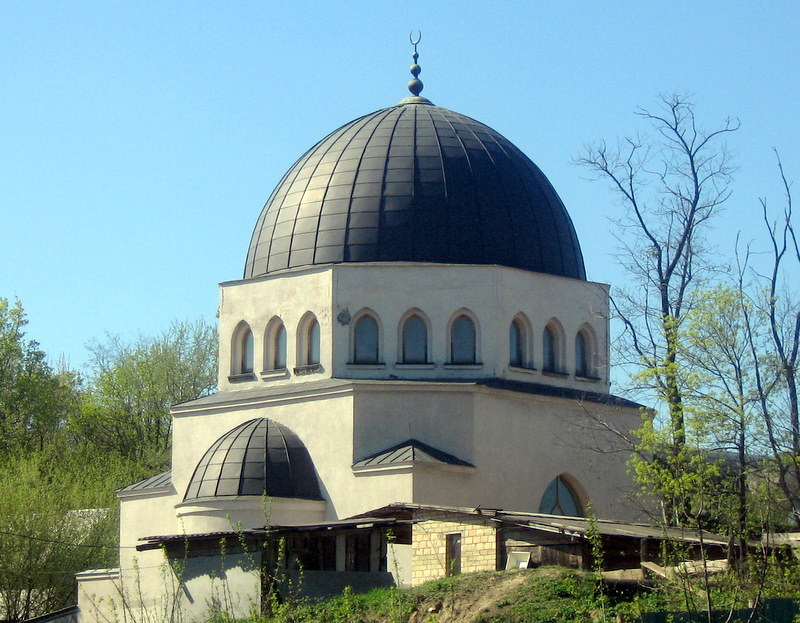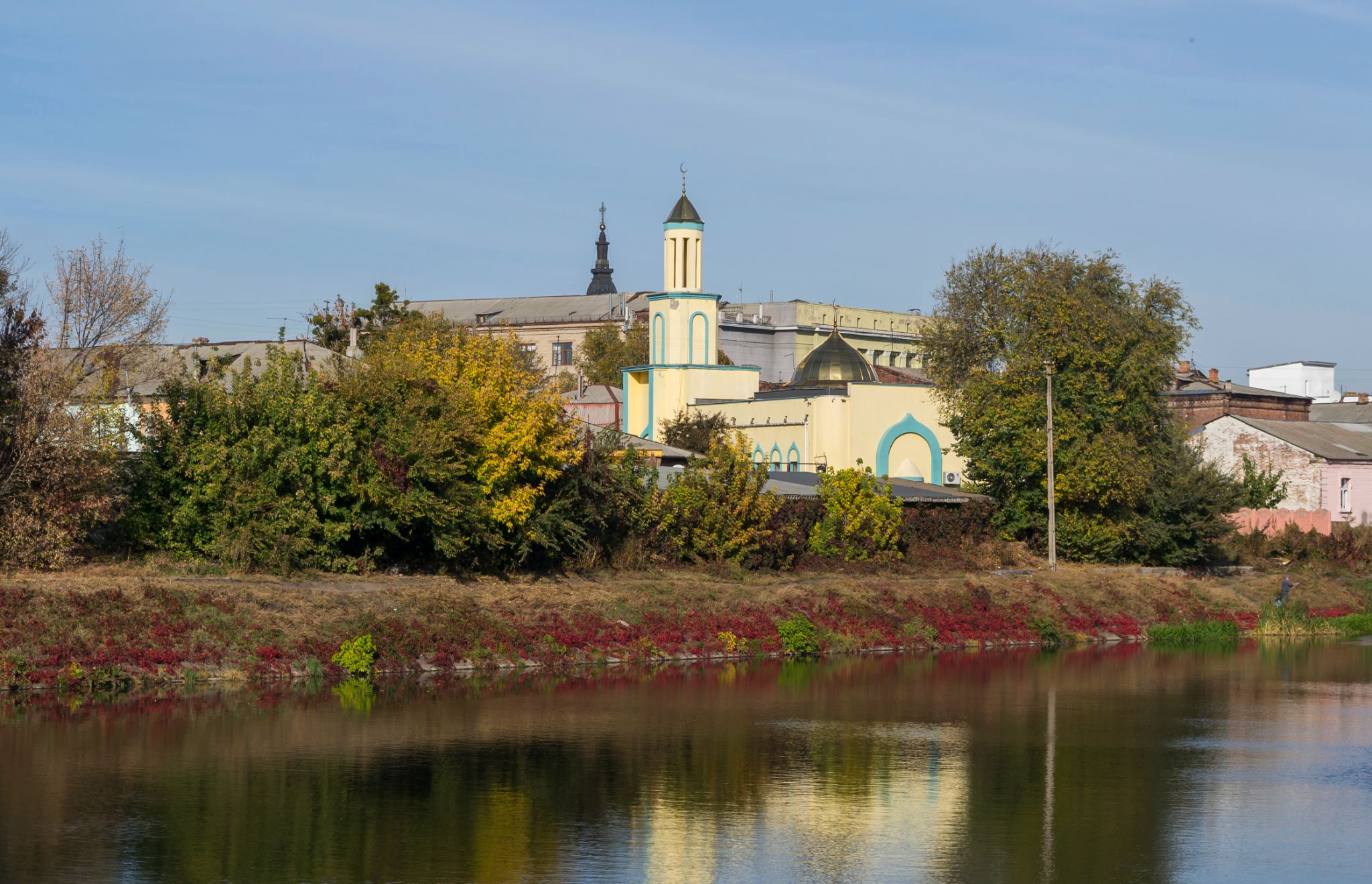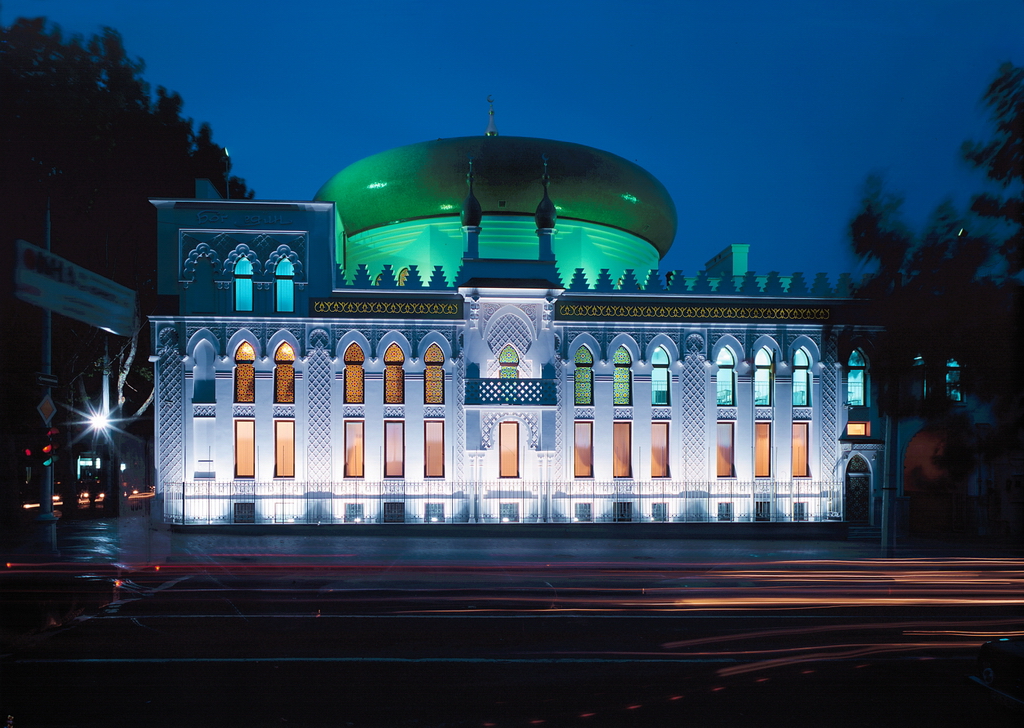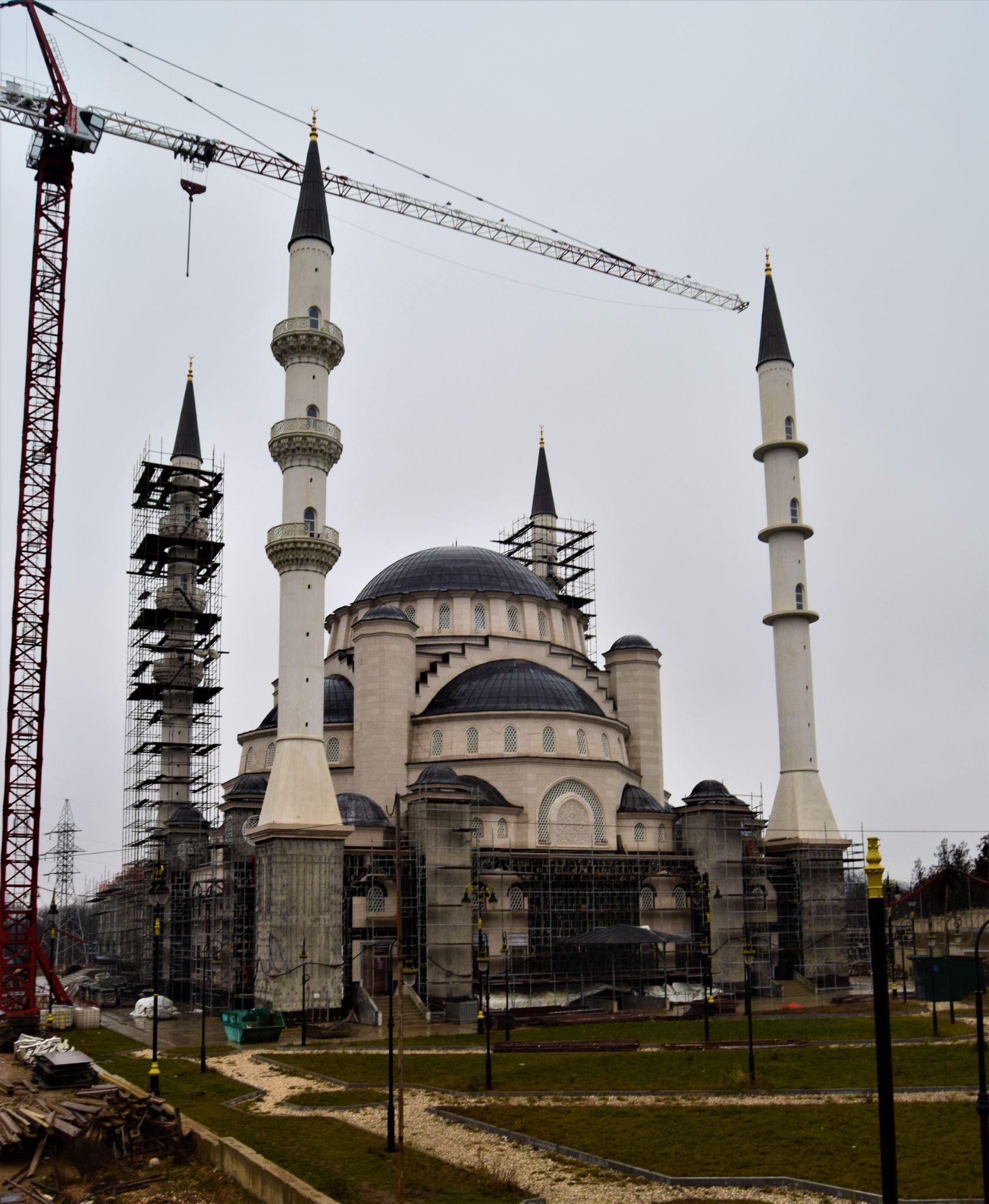Ukraine: Seven of the country's most important mosques

It might not be a widely known part of Ukraine's rich history but at one point there were nearly 1,500 mosques in the former Soviet country.
That number has declined, but there are still some outstanding mosques, both old and new, that have withstood a century of war, upheaval and religious persecution.
Islam was formally introduced to Ukraine when its Mongol rulers, known as the Golden Horde, converted to Islam in the early 14th century.
The fragmentation of the Horde in the late 15th century gave rise to the Crimean Khanate, a state ruled by the Tatar descendants of the Mongols.
Initially independent, the khanate first came under the sway of the Ottoman Empire before being annexed by Imperial Russia.
Stay informed with MEE's newsletters
Sign up to get the latest alerts, insights and analysis, starting with Turkey Unpacked
After their incorporation into the Russian Empire, Muslim communities in Crimea began moving out to other parts of Ukraine, mainly to southern and eastern cities, like Donetsk and Luhansk, but also to Kharkiv - today at the centre of the war launched by Russia - where Tatars settled as early as the 1840s.
Odessa too held particular importance, due to its role as a departure point for the Hajj pilgrimage to what is now Saudi Arabia.
However, after the annexation by the Russian Empire in 1783, a Russification policy led to an extensive campaign to reduce the influence of Islam in the region.
Some mosques were turned into churches, like the 17th century Mufti Jami Mosque in the Black Sea town of Theodosia. Under Russian rule, it functioned as an Armenian Catholic Church for a time, but returned to its original purpose in 1998.
Art historian Nicole Nur Kanchal states there were once as many as 1,474 mosques in the region, compared with just 160 today.
Muslims, along with other religious groups including Christians, faced further persecution under the Bolsheviks following the October Revolution in 1917.
During the rule of Soviet leader Joseph Stalin, mosques were shut down and Ukraine's Crimean Tatars were expelled to Central Asia.
After the fall of the Soviet Union and the establishment of an independent Ukraine, the country's Muslims began enjoying a resurgence with mosques re-opening and those who had been exiled allowed to return home.
While the number of Muslims in the country remains small, as low as one percent of the population by official accounts, the religion still has a visible presence with mosques dotted around Ukraine.
Here Middle East Eye looks at some of the most significant Muslim houses of worship in the country:
Ozbek Han Mosque, Staryi Krym
Built in 1314, during the rule of Mongol leader Uzbeg Han, the Ozbek Han Mosque is possibly the oldest mosque in Eastern Europe.
The construction of the mosque coincided with the mass conversion of Mongols across Eastern Europe and the Middle East to Islam.
Why they chose the religion is a matter of debate among historians, but reasons range from the spiritual to the politically expedient. In many cases, the Turkic allies of Mongol rulers were already Muslim.
The Ozbek Han mosque is notable for the madrassa (religious school) appended to the southern wall of the mosque, which was built 18 years after the original structure.
The plain grey brick building could be mistaken for a countryside barn, if it was not for the stone-cut muqarana structures at the mosque's entrance.
After falling into ruin during Soviet rule, restoration work began in 2017 with new tiling on its roof, a restored pulpit and new Arabic inscriptions.
Juma Jami Mosque, Yevpatoriya
An early example of Ottoman-influenced architecture, the Juma Jami mosque was commissioned in the mid-15th century by the Crimean leader and Ottoman ally Devlet Giray I.
After a series of military setbacks against Russian forces during his rule, Giray is best known for his campaign against Moscow, which he is said to have largely destroyed by setting fire to the city.
To build the Juma Jami, Giray hired the famed Ottoman architect Mimar Sinan, who built the Suleymaniye Mosque in Istanbul, as well as the Mostar Bridge in Bosnia.
The multi-domed structure, which was the only one of its kind in Crimea, was completed in 1564.
Sixteen windows at the base of the main dome allow light to flood into the prayer hall, and light also filters through two tiers of windows along the walls.
The building has been repeatedly restored, including its last major restoration during Soviet rule in the 1970s.
Ukraine's Communist rulers had turned the mosque into a museum and it only returned to its religious function after the collapse of the Soviet Union in 1990.
Sultan Suleiman Mosque, Mariupol
Built in honour of the Ottoman Sultan Suleiman and his Ukrainian wife Roxelana, also known as Hurrem Sultan, Sultan Suleiman marries Ottoman architectural styles with local Tatar ones.
One of the most ornate mosques in Ukraine, the building is located by the Sea of Azov in the city of Mariupol.
During Russia's recent invasion of Ukraine, the mosque was the subject of inaccurate reports that it had been damaged by Russian shelling.
Mosque officials later confirmed that the bombs had fallen 700 metres away from the actual compound and not on the mosque itself.
Said to be inspired by the design of Istanbul's own Suleymaniye Mosque, tourists and worshippers can also appreciate the building's many water features.
Financed by Turkish businessman Salih Cihan, the mosque opened its doors to worshippers in 2007 and its imam is appointed by Turkey's Directorate of Religious Affairs.
Ar Rahma Mosque, Kyiv
The first purpose-built mosque in Ukraine’s capital opened in 2001, with an expanded complex, including a school, opening in 2011.
Designed to offer prayer space for up to 3,000 worshippers, the mosque spans 3,200 square metres across three halls, with minarets stretching 27 metres into the sky.
The place of worship was built on the slopes of Mount Schekavitsa, in the Tartarka neighbourhood where the Nizhny Novgorod Tartar community have been living since 1840.
This early community used to pray at the home of the local imam but in 1913, local governor Mikhail Sukovkin is said to have laid the foundation stone for the first purpose-built mosque in Kyiv in Gogolivska Street.
However, decades of war, revolution and bureaucracy delayed its completion and actual construction only began in 1994, after the collapse of the Soviet Union.
Kharkiv Cathedral Mosque, Kharkiv
Built in 2006, the Kharkiv Cathedral Mosque sits on the site of an earlier mosque built in 1906, which was destroyed by the Soviet Union in 1936.
The city's Muslim population is made up of descendants of Tatar and Bashkir soldiers who were deployed to the area during the Russo-Turkish War of 1877 and chose to remain there.
During Stalin's rule, Communist officials claimed that the mosque hindered the flow of the Lopan river and therefore needed to be removed. Residential housing was built in the area instead.
In 1999, work began to rebuild the mosque at the same location and using the same architectural design, as an homage to the original.
Al-Salam Mosque and Arabian Cultural Centre, Odessa
The city of Odessa is said to have been built on the site of a medieval Tatar settlement called Hadzhibey, named after its founder Hacı I Giray, who was the Khan of Crimea in the 15th century.
Between the 16th to 18th century, the city became an Ottoman fortress with a thriving Muslim community.
In the 19th century, leading Azerbaijani architect Karbalayi Safikhan Karabakhi constructed a mosque in the centre of the city and the land beside it was made into a Muslim cemetery.
The original mosque was destroyed during the Soviet era and it wasn’t until 1992 that Crimean Tatars returning from exile established the the Odessa Muslim Society, a forerunner to the current centre and mosque.
A new mosque, designed with Moorish architecture, stone arches and intricate calligraphy, opened in 2001 and was financed by a Syrian businessman called Kivan Adnan.
Besides offering a prayer space, Arabic language classes are also offered at the centre.
Buyuk Juma Jami, Simferopol
Although work began on the Buyuk Juma Jami Mosque in 2015 after Russia's annexation of the Crimean peninsula, plans have been in the pipeline since 1996.
After years of bureaucratic delays, in 2008 the local Tartar community set up a tent city on the site of the mosque and began transporting limestone piece by piece to the site.
The move was a protest by the community against construction delays, but the stones also served as memorials to the community's ancestors, with some writing the names of their deceased and deported relatives on each block.
With Turkey providing much of the $10m construction costs, the mammoth mosque will be the largest Muslim institution in the Crimean Peninsula when it finally opens.
Covering 1,400 square metres, Buyuk Juma Jami is said to have enough space for 4,000 worshippers.
A huge 28 metre-high dome will be flanked by four 50-metre high minarets and the inner courtyard is designed in the Ottoman style featuring a traditional ablution area with 24 pillars around the outer edge.
Hand-painted yellow tulips decorate the interior, as a tribute to the Crimean Tatar poet Noman Chelebidzhikhan's poem Yellow Tulip.
This article is available in French on Middle East Eye French edition.
Middle East Eye delivers independent and unrivalled coverage and analysis of the Middle East, North Africa and beyond. To learn more about republishing this content and the associated fees, please fill out this form. More about MEE can be found here.


